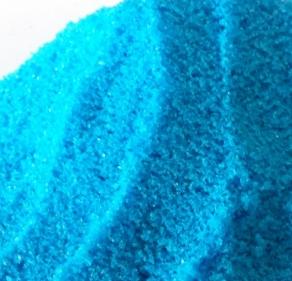Less than 10 days from the opening of the export gate, the domestic spring market has concluded its conclusion. The diammonium enterprises took a small profit, and the monoammonium manufacturers still kept their support. After 2008, the export gate has been the most important gate to ease the domestic surplus and ensure the stability of the autumn market. It counts on the export volume and price situation in recent years and the autumn market conditions. It will export Wangshiqiuwangwang and export the cold in autumn. . This year's export situation is pushing domestic ammonium phosphate prices into the market. Magnetic screen windows have revolutionized the way we enjoy fresh air and keep insects out of our homes. These innovative screens are designed with a magnetic closure system, allowing for easy entry and exit while effectively sealing off any gaps. Made from durable and high-quality materials, magnetic screen windows provide a reliable barrier against bugs, mosquitoes, and other unwanted pests. They are easy to install and remove, making them a convenient option for both temporary and permanent use. With their transparent mesh construction, magnetic screen windows allow for unobstructed views and optimal airflow, creating a comfortable and bug-free environment inside your home. Whether you're hosting a gathering or simply enjoying a peaceful day indoors, magnetic screen windows offer a practical and hassle-free solution. Magnetic screen window, Insect screen, Mesh screen Jinwu Glass Fiber Co., Ltd , https://www.jinwuwindows.com
The export policy of diammonium this year was significantly looser than last year, which also led directly to the apparent recovery of ammonium phosphate exports in the first quarter of the country. Taking the March data as an example, the export of diammonium rose by 477% year-on-year to reach 243,000 tons, and the monoammonium also had an outstanding performance of 145,000 tons. However, referring to the poor average price, diammonium is only 393 US dollars, an ammonium 417 US dollars. Considering the comprehensive price, the export prelude is still marginal. Looking at the market outlook, I believe that manufacturers are not happy.
It can be seen that this year's export policy is more robust, especially in responding to India's tough bones. In April of this year, China’s big manufacturers have been in frequent contact with India and signed nearly 1 million tons of export intentions, but this seems to make the industry's excitement orders leave a knot for food and clothing: price. After delays, India either gave the price abnormally or simply consumed it.
However, in the lasting stalemate of prices, the mainstream prices in the international market are still falling behind. It is compared with the market in early May in the middle of April till now. At the time, the diammonium FOB prices in Tampa, Morocco and the Baltics were 455-465 US dollars, 500-530 US dollars and 455-495 US dollars; the price has dropped back to 440-450 US dollars, 450-470 US dollars and 425- 445 US dollars, just over 10 days, the highest drop of 60 US dollars. China's FOB prices also fell by 5 to 20 US dollars.
Not only the diammonium is falling, but the upstream ** is also drawing a salary. In mid-April, Vancouver FOB price is 140-145 US dollars, North Africa is 145-160 US dollars to shore, and China is 120-155 US dollars to shore; in early May, the price of the three places was 125-135 US dollars, 135-155 US dollars, and 105-155 respectively. Dollars. It is also falling.
In this situation, this situation is similar to that of last May. The export portal will start, and international prices will continue to fall. Next is the export of low prices, the domestic autumn market wait-and-see, the winter stockpiles ahead of the distribution of goods, the downstream complains.
According to recent news, India has already pushed China's diammonium CIF to 440-445 U.S. dollars, which is equivalent to only about US$410 out of shore in China. It eliminates shipping charges and other miscellaneous fees for ports, which is equivalent to only RMB 2,200-2,300. This historically low price is dragging diammon to the quagmire, and judging from the current game, the Indian side still has the urge to keep prices down. Regardless of exports or domestic sales, diammonium prices are facing big test.
A few orders for ammonium exports have driven the domestic market with a high level of monoammonium. However, domestic shipments of 55% powder ammonium, which are generally mass-produced by domestic SMEs, have not been shaken.
Recently, a single ammonium inquiry sheet is still weakening. Manufacturers are shipping, and there are sporadic shipments on foreign trade orders, and the price is low. Domestic low-level monoammonium is already in the state of limiting winter production, and prices are still difficult to defend. The mainstream of 55% ammonium powder in the southwest is set at around 1750 yuan, the factory in Hubei is from 1800 to 1850 yuan, and 55% from Shandong is from 1880 to 1900 yuan. The recent domestic market procurement has shrunk severely. Companies are striving for export orders and the operating rate has continued to decline.